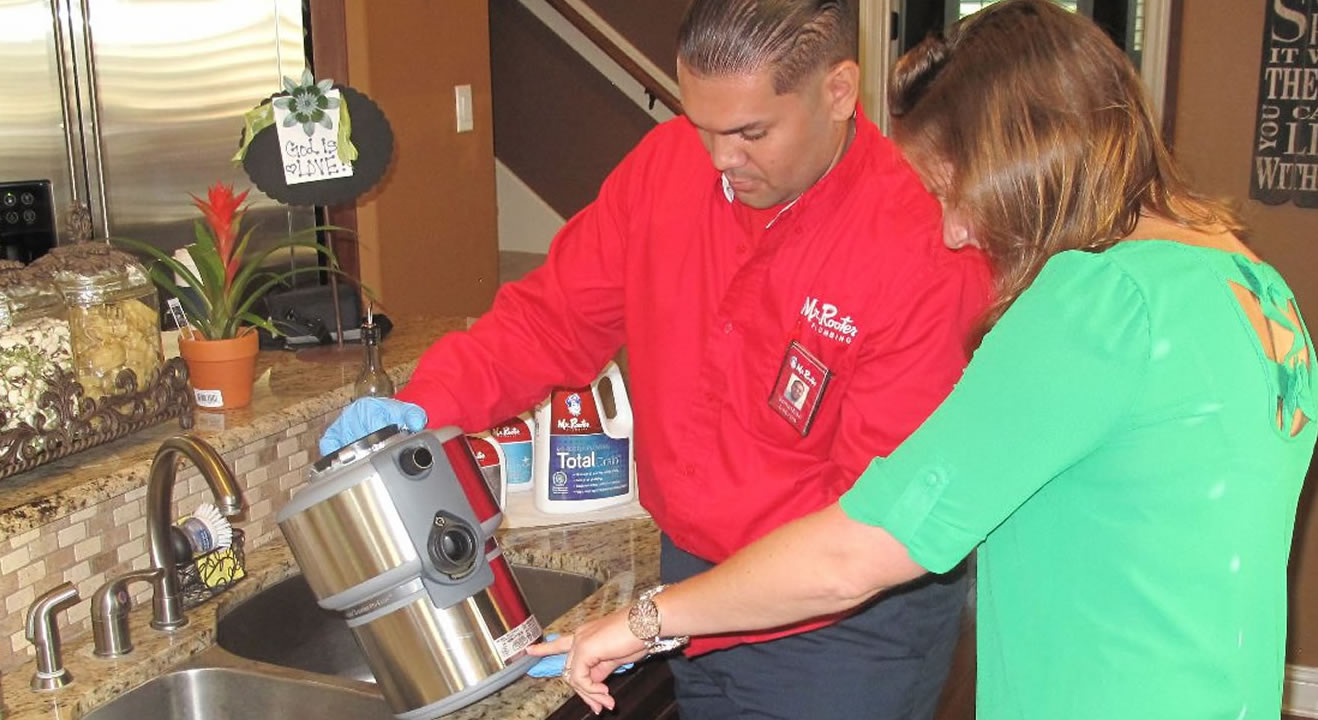Menu
Call This Sunday to Get $50 Off
Do You Need a Plumber in Dallas, TX? Call us Now to Get $50 OFF
4.8 / 5 Ratings based on 1384 reviews Great Plumbers, Great Reviews
Call This Sunday to Get $50 Off
A garbage disposal is a lifesaver in the kitchen. It provides a quick and convenient way to dispose of food scraps directly through the sink. While the appliance comes in handy in the kitchen, it’s not immune to clogs. Certain foods and improper usage can still cause them to clog. Thankfully, unclogging a garbage disposal is a fairly easy task and requires nothing more than tools you probably already have and following the instructions in the user manual. Knowing how to unclog a garbage disposal could save you the cost of a service call.

In this guide, the licensed and insured plumbers at Mr. Rooter Plumbing walk you through the steps to unclog a garbage disposal. We are a premier plumbing service that you can trust to install, repair, and replace your garbage disposal. If you’re not comfortable unclogging your garbage disposal yourself, give us a call. Here are the steps to follow to clear a clogged garbage disposal:
This is absolutely essential to avoid any risk of shock or injury. Locate the power switch, usually near the sink or under the cabinet, and flip it to the "Off" position. It’s also advisable to unplug the disposal itself for added safety.
Use a flashlight and tongs to remove any visible obstructions, like large food scraps or objects stuck around the blades. Be mindful of sharp edges and ensure the power is off before starting this step.
This is one of the simplest techniques for clearing drain clogs. Pour ½ cup baking soda down the drain, followed by 1 cup of vinegar. The fizzing action can break down grease and loosen minor clogs. Let it sit for 15 minutes, then flush with hot water. However, this technique might not be powerful enough for severe clogs.
If the baking soda and vinegar mixture does not work, it’s time to grab a dedicated garbage disposal plunger and follow these steps:
The P-trap is the curved pipe located under the sink that traps debris and prevents sewer gases from entering. Use an adjustable wrench or pliers to loosen the slip nuts and detach the P-trap. Remove any blockages in the P-trap, focusing on the bend. Remember, detaching the P-trap requires plumbing knowledge and caution to avoid leaks when reattaching. Unless you're comfortable with plumbing tasks, it's often safer to call a plumbing repair service for this step.
Some disposals have a hex wrench socket on the underside. Insert and turn the wrench to manually rotate the blades and potentially dislodge stuck objects. Keep in mind that not all disposals have this feature, and using it incorrectly can damage the unit. Our plumbers recommend you refer to your manual for specific instructions.
Don't hesitate to seek professional help from a licensed plumbing repair service if none of the DIY methods work.
If your garbage disposal is acting up and you’re looking for a reputable plumbing service that offers professional garbage disposal repair services, call the experts at Mr. Rooter Plumbing. Our qualified and experienced plumbers have the expertise and modern equipment to diagnose the problem and make efficient repairs. Call us today to help you restore your garbage disposal to good working order.
A kitchen sink is a fixture you use every single day without giving it much…
Read More+When temperatures swing between freezing and warm, your gas lines take the hit long before…
Read More+When you call a plumber in Dallas, TX because your water bill is high…
Read More+When trees grow near your home, their roots don’t stay neatly within property lines. They…
Read More+